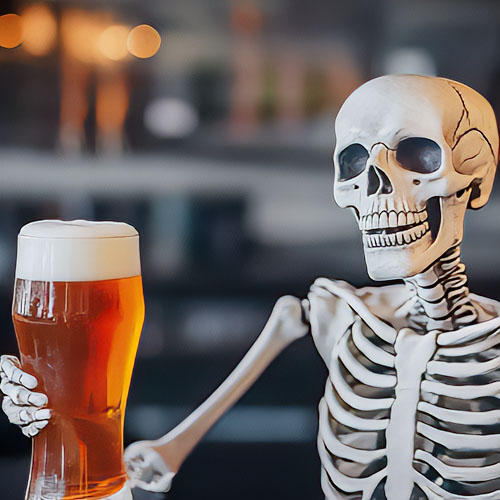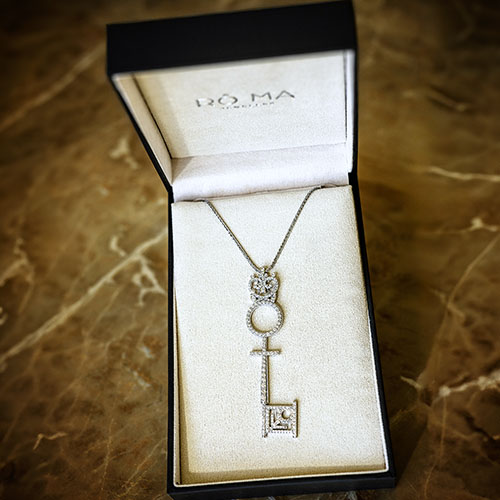What my friend’s very public demise taught me about mental health and social media.
Losing Nikki
Nikki Shriver and I met while working at a Daytona Beach strip club in 2009.
I was dancing my way through my bachelor’s degree and Nikki, like a lot of people, was searching for a more financially comfortable life that didn’t come at the cost of the 9-to-5 grind.
Every weekend we shared the stage, gyrating in the neon haze before captivated men waving dollar bills. Every night, we followed the same routine when we weren’t onstage: walk the floor in our heels, pick a table, take a seat, shake hands, and bat our lashes. Find something in common with the client and build on it. Close the sale.
Sometimes a fight would break out among dancers in the dressing room. Fights tended to be triggered by accusations of someone stealing money or doing “extras” for patrons. Management would lock the dressing room’s door and let us go at it. They believed we needed to “get it out of our system,” like some deranged version of Bad Girls Club meets Cage Wars.
After a scrap, a dancer would straighten up, pat some foundation on her bruised nose, and return to the floor like nothing had happened. The worst thing I ever did was throw a Heineken bottle at a dancer when I found out she’d been fucking clients in the VIP room. We were all wild back then. It could be a pretty rough club. But I never saw Nikki participating in any of the fights or wildness. She seemed to glide above this stuff.
When we’d sit at the same table, dishing out charm to get a lap dance, I’d watch mesmerized as the light hit her face just right, bouncing off her sapphire eyeshadow. She had blue eyes and brown hair, stood just a little over five feet tall, and had a quiet personality to go with her unimposing physical frame — she was different from the rowdy, more boisterous dancers. Most nights at the club, she dressed in blue lingerie and knee socks, her long hair swept to one side of her face, often pinned with a girlish bow.
As Nikki moved through the club, sometimes a look would come onto her face that I could decipher, since I was familiar with the feelings behind it, as were other dancers. It was a look saying, “I might be working at this club now, and there’s a reason for it, but I won’t be here forever.”
That said, some of the dancers had been taking that stage for a while. It was the kind of club where you could get stuck. I was working there to graduate college debt-free, and had plans to move to Dallas and see if I could put my English degree to work. I used to wonder if Nikki would be gone one day, too, on to another city or a different life, or if in a couple of years she’d still be dancing at the club, in her knee socks and bow.
A decade passed. Eventually I did get to Dallas, after time in Jacksonville and Hilton Head, South Carolina. And then one evening last June, while stuck in Texas traffic, a notification popped up on my phone. It was a direct message from a dancer I knew from the Daytona club. A group of us from those days had been close at the time, but over the years we’d drifted apart. However, we stayed connected on Facebook, where we watched each other’s lives play out in photos and timeline updates.
It had been several years since I’d last spoken to Nikki, but I was familiar with the basic arc of her life from her posts. She was a single mother with three adorable young daughters, and still lived in the general Daytona area.
The message on my phone contained a link, which took me to Nikki’s timeline. A Facebook Live video shot in the dead of night on June 5 shook me to my core.
Nikki stood alone in a murky frame, with an orange glow of what looked like flames visible through a narrow doorway behind her. Her once-long hair had been chopped off, replaced by an unkempt bob. She didn’t say anything but she was panting, almost hyperventilating, and the sound of her voice had a desperate quality.
Wherever she was had a low ceiling, and cramped dimensions. There were pillows on what looked like a bench to her left, and crockery on a shelf. As I stared, Nikki raised what looked like a blowtorch…no, a gun. A rifle of some sort. Then she turned around, walked to the narrow, partly curtained doorway, and passed through it, into the flaming space beyond.
The video kept going. The fire grew stronger beyond the doorway, and there were sounds of crackling flames and soft whooshes as things ignited. The doorway curtain caught fire, sparks flew, and then smoke began obscuring any view at all, even the glow of flames.
People seeing the video’s live broadcast posted urgent responses. I’m trying to get you help. What’s burning? Hey, what’s going on? Yikes, girl. This is scary. Are you okay?
The screen was almost black now as thick smoke filled the space where the smartphone had been propped. Suddenly there were sharp popping sounds, like firecrackers. The video had been recording for more than four minutes. And then came the worst of it.
Nikki began screaming. The muffled wails lasted a full 15 seconds, rising above the popping sounds in the flaming space beyond the doorway. And then abruptly the video stopped.
My head was spinning. I could barely breathe. I wasn’t sure exactly what had taken place, but knew it was very bad. What I’d seen felt like a horror movie. Except this was real.
Did Nikki just kill herself? That was one of the thoughts I had.
We should have known something like this might be coming.
The previous June, Nikki had gone missing for four days. Around 4:30 A.M. on a Friday, her 1997 Toyota pickup had gotten stuck in the Tiger Bay Wildlife Management Area, a vast wooded wetland near Daytona Beach. She called 911 in need of assistance, and during that hourlong call talked frantically and confusedly to the dispatcher. It was obvious she wasn’t mentally well.
Nikki told the dispatcher she’d been exploring the forest in her truck. She said her boyfriend had been kidnapped by “outlaws,” and that she could see spirits when someone was about to die. When police got to the location, they found a tan pickup stuck in mud, but no Nikki.
Four days later, around dawn Tuesday morning, Niki walked barefoot out of the woods, a mile from where she’d left the truck. She was muddy and disheveled, but incredibly, she had no serious injuries. Media reports made reference to her “survivalist background” and said she’d “spent time in the woods in the past.” Somehow Nikki had managed to take care of herself for 96 hours in a Florida cypress swamp full of alligators and snakes.
She told searchers she’d been hiding because she thought someone bad was looking for her. Police snapped a photo of her seated in the back of a vehicle wrapped in neon yellow rescue garb, mud caking her feet and ankles, face grim.
They took her to a nearby hospital for a mental-health evaluation.
And now, in the aftermath of the video she shot on what turned out to be an unmoored sailboat in a Daytona Beach marina, Nikki was again declared a missing person.
It would be five days before authorities found her, dead in the charred boat.
During this time, Florida media referred often to what had happened to Nikki a year earlier, in the Tiger Bay woods. But they also reported on something else that helped make sense of the horrific Facebook Live video, which remained on Nikki’s timeline.
The night Nikki shot it, a Daytona Beach woman named Betty Jo Garcia called 911 at 2:15 A.M. to request police action. She wanted them to evict Nikki from the boat.
“My husband’s been having an affair with this stripper for a year and a half,” Garcia related. “She’s been living on my boat for two days now. I was out of town, so I had no idea this woman was on my boat. I want her off my boat. I want to file a restraining order because she keeps calling and blowing up my phone.”
Garcia owned the sailboat with her then 51-year-old husband, John. It was Nikki who informed his wife of the affair. Betty Jo feared Nikki would shoot her if she tried to confront Nikki on her own, since there were weapons onboard (a shotgun, a handgun, and an AK-47, along with rounds of ammunition) to which Nikki could apparently gain access.
When police got to the Halifax Harbor Marina, they found the burning sailboat anchored 20 feet from the dock, mooring lines untethered. And they heard what sounded like ammunition exploding on the flaming vessel. Here is where the story takes another hard-to-believe turn.
Neither the Daytona Beach police nor the fire department has a rescue boat
at its disposal. They used a P.A. system
in an attempt to contact Nikki, and deployed a helicopter and drone, but didn’t spot her. As cops stood on the dock watching the boat burn, Betty Jo Garcia showed up and tossed a photograph of her and her husband into the harbor.
Nine hours later, nearing noon on June 5, police reached the boat, having received marine assistance from the Coast Guard and Florida Fish and Wildlife.
They found the 1979 Morgan Craft sailboat severely damaged, but there was no sign of Nikki.
The Garcias had informed police that Nikki talked of suicide during phone calls she’d placed to them, after John Garcia told her he wanted to end their affair. So for five days, the local news media ran with stories about a “scorned and suicidal woman” (to quote the Daytona Beach News-Journal) who’d set a boat on fire and then disappeared.
Finally, police found Nikki, under a large cushion inside the burned sailboat, which had been moved back to its slip. Somehow they’d missed her during the initial search.
An autopsy found soot in her lungs and concluded she died of smoke inhalation.
In the days after Nikki’s death had been confirmed, I felt shock, sorrow, and anger.
Her face kept coming into my mind, and memories from our club days. I thought of her three daughters, and Nikki’s own mother, who I’d seen in photos. I got angry at the thought of things reaching a state with Nikki’s mental health where she urgently needed help to stay alive but it didn’t come. I got angry at the thought of her body sitting on that wrecked boat for days. And I got angry at Facebook.
Meanwhile, the video remained on Nikki’s timeline. She had a private account, so despite press coverage of the video, only a limited number of people viewed it. Still, it seemed so wrong — obscene, even — that a video made by a desperate, mentally ill woman in the last seconds of her life could be watched.
I flagged the video to Facebook, and received an auto-reply for reports of platform abuse encouraging me to visit the Help Center to learn more.
Nikki’s birthday arrived in September. She would have turned 32. People posted messages on her Facebook timeline wishing her a good day in heaven.
The video was still up.
Shortly before Christmas, when I reported the video to Facebook once again and nothing happened, I sent an email to the company’s press department. A week later, I got a response with an offer of a phone call.
Although Facebook asked that I keep our conversation off-record, the representative I spoke to explained that the reason the video stayed up was because Nikki did not kill herself on camera — she goes off camera for this. An important distinction in the Facebook algorithm, apparently. But then the rep told me what I wanted to hear: The video had been removed.
People react to loss and tragedy in different ways. After Nikki’s death, I searched her timeline for clues that might shed light on her actions. One thing
stood out. It was a quote from the author Jeff Brown. The first sentence read:
“So many break down because they cannot carry the weight of falsity any longer.”
I’m glad Facebook took down the video, but when I think about how long it remained on Nikki’s timeline, autoplaying any time you visited her feed, it strikes me how this platform can be so vigilant about things like a nipple slip in a photo, or putting you in purgatory for posting a politically incorrect meme, yet this tragic recording played on a loop for six months.
With some time to gain perspective, I suppose the reason I got so focused on the matter has do with an experience that’s probably close to universal when a friend or family member dies in circumstances as dire as Nikki’s.
There’s a feeling of guilt and a feeling of powerlessness. You wish you could have done something. You wish you could have reached out to the person at the right time. That didn’t happen here, and I think my emotions pushed me to focus on something connected to Nikki where I could get some action: the video.
A social media platform like Facebook can keep people connected across time and geography, and that’s often a good thing; it can also be a place to express grief and remember someone. Nikki’s mom posted loving thoughts about her daughter, and shared how Nikki had struggled with mental illness for a long time, and how it was so difficult for her to see, as a mother. But as experts have been telling us for a while, social media platforms have also created new stressors in people’s lives, and can deepen, not lessen, that “sense of falsity.” Social media invites people to perform a kind of existential Photoshopping on their days and nights, packaging life for likes.
That’s not an avenue to authenticity.
Like most people, I’ve had periods where it’s hard to find the light, and it feels like the darkness is winning. Feeling inauthentic can be part of that depressive state. You smile, but feel nothing inside. You laugh, but it’s a well-rehearsed chuckle. You’re tempted to react to the void with impulse buys, or alcohol, or drugs. It’s a scary place to be in.
When it comes to mental-health treatments and our understanding of mental illness, we’ve come a long way. The range of effective medicines, the sophistication of talk-therapy approaches, the number of treatment facilities — it’s a different landscape these days.
Progress has also arrived in terms of destigmatization, and the prevalence and prominence of conversations about depression. In recent years, top sports figures, ranging from NBA center Kevin Love to boxer Oscar de la Hoya to Olympic swimmer Michael Phelps, have been upfront about their struggles.
And yet suicide numbers remain high, and it doesn’t matter how successful you are, how much money you have, or how much adoration comes your way.
Think of recent high-profile suicides. Soundgarden singer Chris Cornell. Beloved chef and Parts Unknown host Anthony Bourdain. Handbag designer Kate Spade. The list goes on.
The great writer David Foster Wallace, author of Infinite Jest, took his own life 12 years ago. He had a loving marriage, a stellar career, and a beautiful home in Claremont, California. It didn’t matter. His wife, artist Karen Green, found his body hanging on the patio of their house.
There’s more to do. There’s more progress to be made.
As Daytona Beach police chief Craig Capri said after Nikki’s body was discovered, “In the years to come, it’s only going to get worse unless we come up with a program to get their needs taken care of. That’s my biggest fear.”
But with luck, over time, this kind of speaking out by people in positions like Capri’s will help bring about more positive change.



















